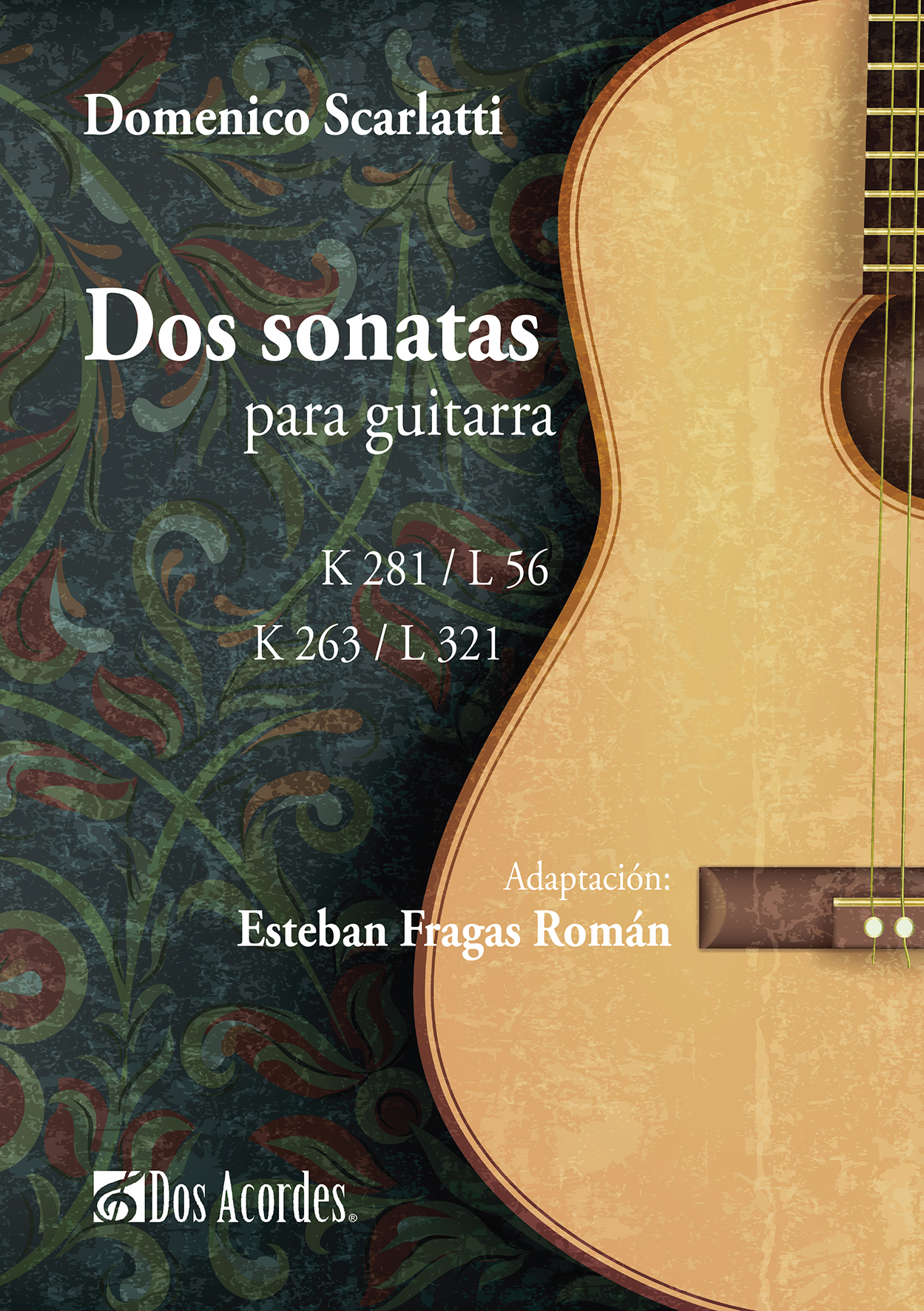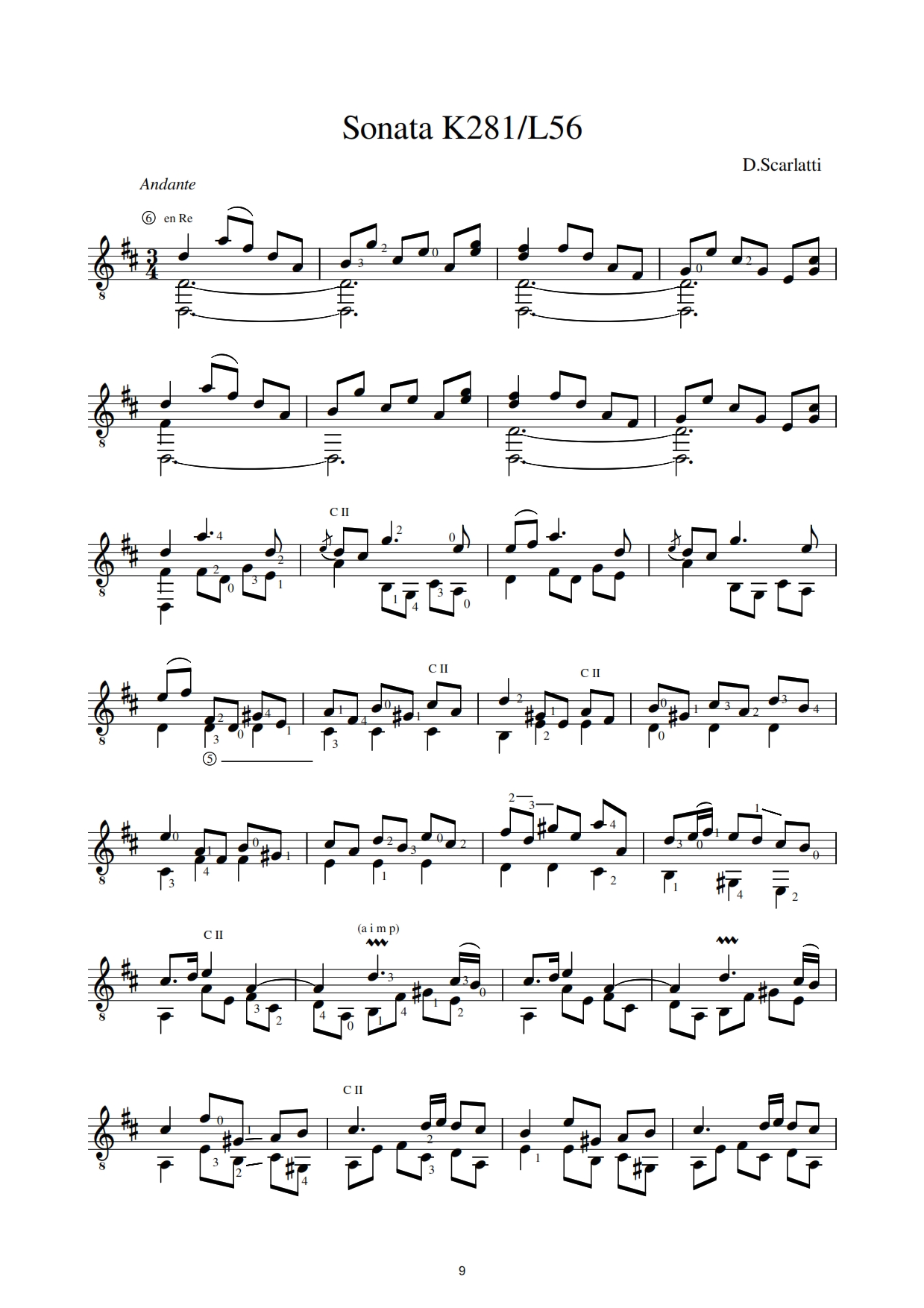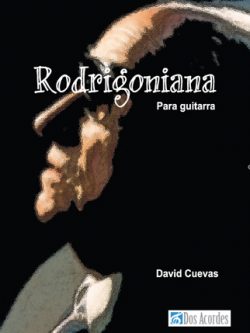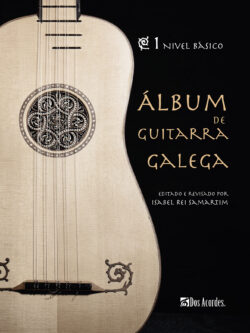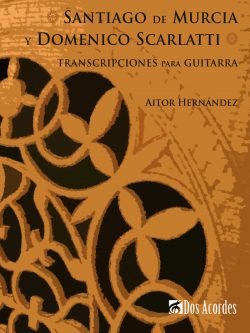Since the publication of his first essercizi in 1738 (the only sonatas published during his lifetime), Scarlatti’s music has never ceased to be rewritten, performed and adapted. Over the centuries, his work has been present in that of many other well-known composers (Brahms, Czerny, Chopin, Listz, Mendelssohn…), and it has even been studied, analysed and catalogued by different experts and researchers. The reasonable conclusion is that his sonatas constitute a homogenous entity, a work of outstanding universal value that goes beyond the meaning of a mere instrumental composition because of their technical perfection and originality. No matter how many pages are written about the Neapolitan genius, it is impossible to do justice to the overwhelming inventiveness of Domenico Scarlatti’s sonatas.
Unfortunately, no autograph version of the sonatas seems to have survived. According to R. Kirkpatrick’s chronological numbering, these two sonatas (K 263-P 283 and K 281-P 289) would correspond to two compositions supposedly transcribed around 1753 by the copyist of Queen Barbara of Portugal, as the manuscripts preserved in Venice suggest. Thus, it appears that they were composed during the Queen’s service in Spain (1729-1757), although this does not guarantee these works were not composed before. After Kirkpatrick, G. Pestelli carried out a new investigation based on stylistic criteria that also suggested that both of them were composed around that time.
Despite the fact that the sonatas are individually numbered in the different sources, according to the manuscripts found in Venice, they were often grouped in pairs or threes, as if he intended to compare them, either by their affinity or by their differences. However, each sonata has its own stylistic character, which, in our opinion, allows them all to be studied as independent units.
In respect of these two sonatas, there are certain structural and aesthetic differences between them. While both follow the basic structure of the preclassic bipartite sonata, widely used by the author, the K 263 deviates from the usual modulation towards the fifth scale degree at the end of the first section, and instead it is replaced with the sixth to initiate the second section, which is not usual in Scarlatti’s sonatas. There is also a notable difference in terms of characters. The K 281, written in ternary rhythm, represents a clear example of the imprint left by popular airs and dance music in the composer’s personal style. The K 263, with a binary structure and written in minor key, has a more serious nature; the use of the counterpoint and the passages with deep chromatism give it a certain contained dramatism.
In this edition, the original tonalities have been respected, thanks to the fact that the register and the tonalities themselves are quite similar to the rudiments of the guitar; apart from some minor changes to facilitate their interpretation, we honestly wish to have preserved the spirit of the original compositions.
Finally, it should be made clear that the sonata K 281 appears in the first place, followed by the K 263, which is actually earlier. This reverse order responds to its interpretative difficulty.

